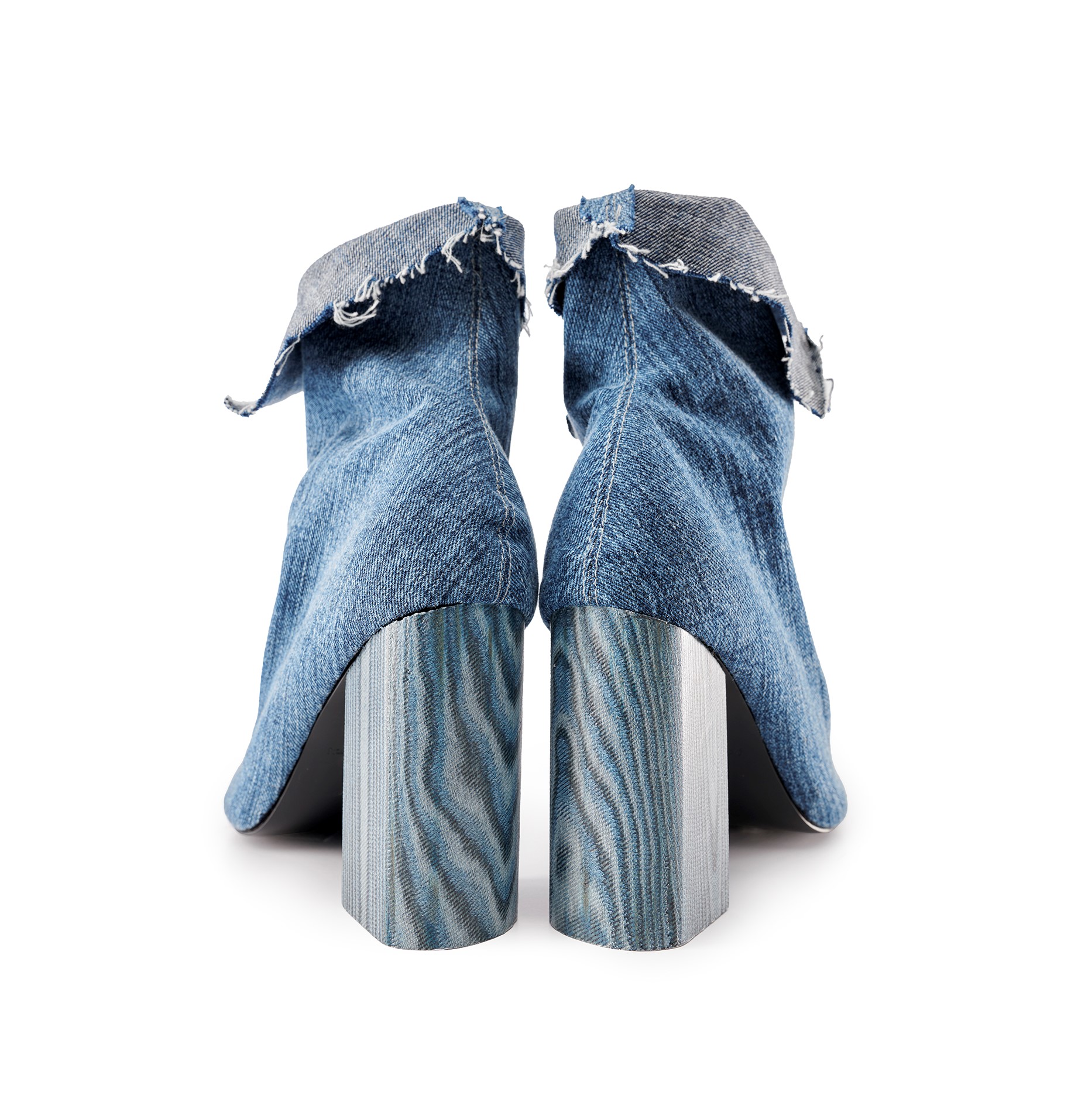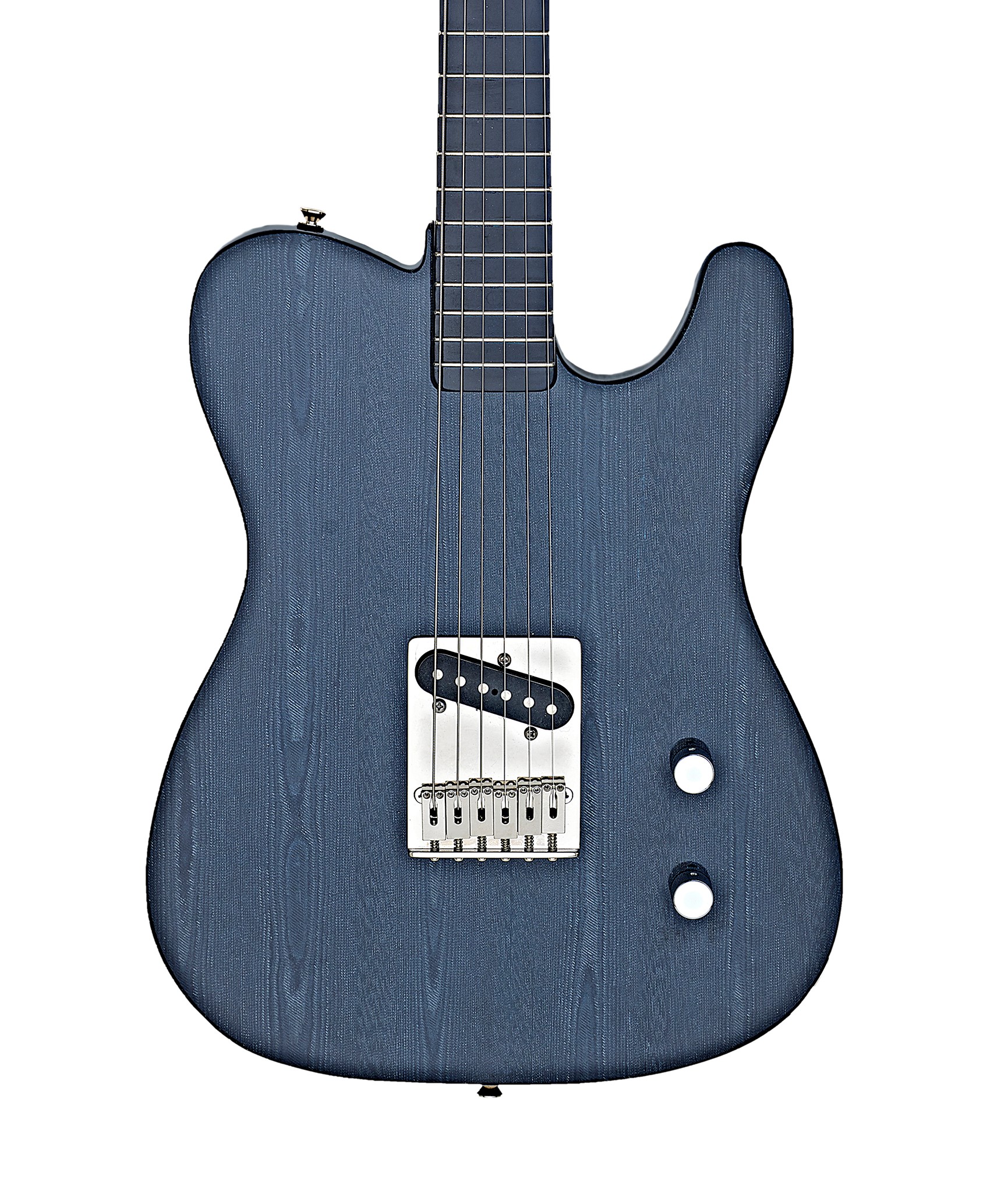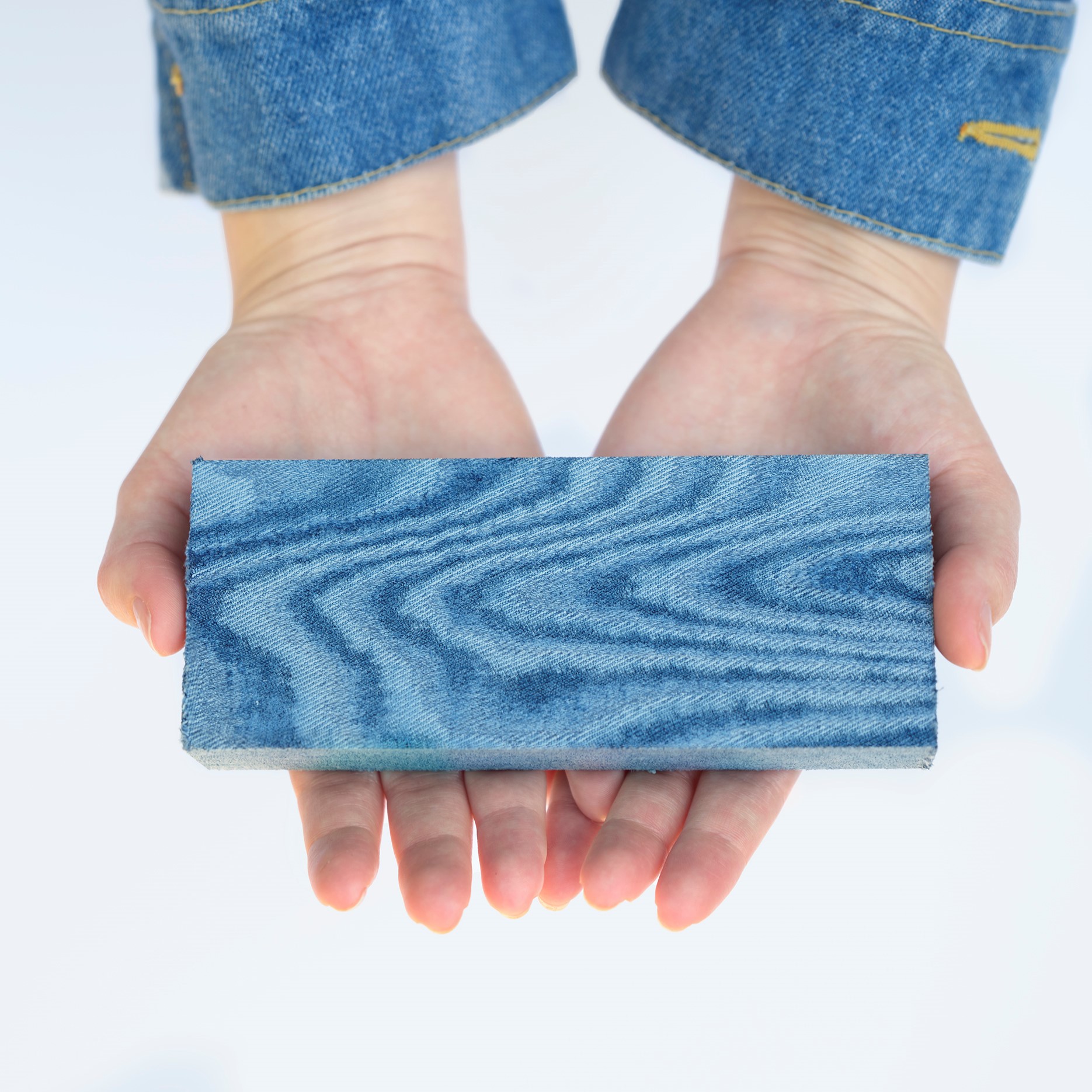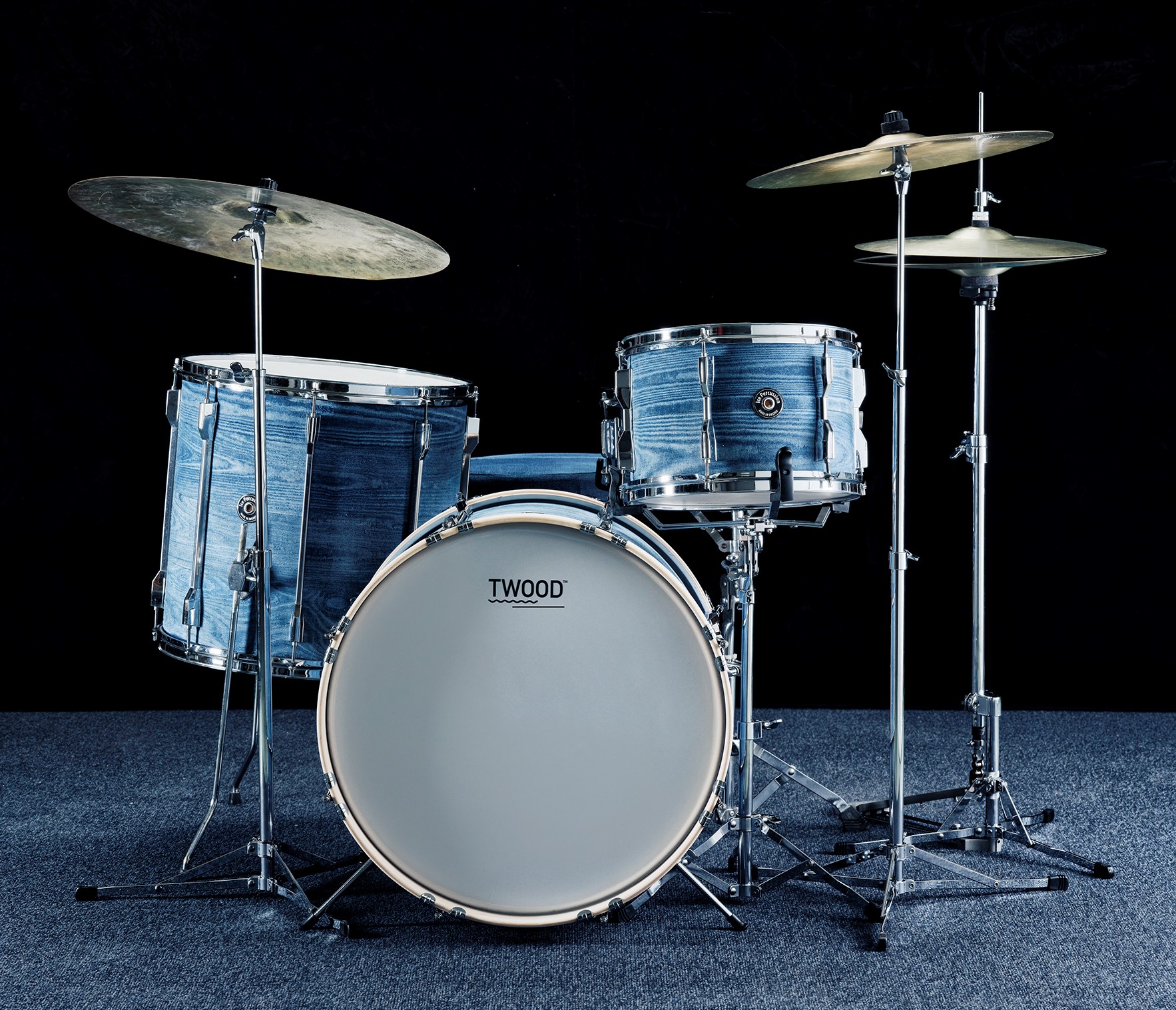
- TWOOD
- Innovative Materials

A new innovative material made of old jeans – hard as wood, soft as textiles.
Twood AB has developed a new and innovative manufacturing technology, where recycled textile waste can be upcycled into a unique material with similar structure and appearance as solid wood. With the patented technology the material will get a textile/aesthetic expression. A sustainable material/products made to be loved and last for a long time.
Photo: Lennart Sjöberg
Shoes: Design by Anna Lidström
Guitar: GNU/Lars Arvidsson
Post consumer jeans and binder with no phthalates or isocyanates.
TWOOD AB
TWOOD [textile-wood] is a result of a design-project that had an poetic perspective. The aim was to explore various ways of recycling/upcycling denim, maintaining the aesthetic perspective. Jeans, a material that most people can relate to and often have a personal relationship with. Yet, they most often ends up as waste – fibers worthy of a second life. One of the techniques developed in this project turned out to be a material innovation.






The textile fiber system is under pressure from several directions:
• Geopolitical instability requires a more resilient textile fiber system that can utilize
more sources of raw material.
• Economic- and population growth will likely result in doubled demand for textile
fibers in the coming decades from already stressed sources.
• To limit climate change to 1,5 degrees Celsius in accordance with the Paris
Agreement we must consciously recycle fibers and use raw material sources that can
build soil health.
In the module Innovative materials, we explore alternative raw material sources that allows
companies to explore the entire circular economy as well as novel design and functional applications.
We showcase materials that has significantly lower sustainability impact, can help to strengthen soil
health, and build resilient communities.
All group objects:
The origin and production of the materials that make up a product as well as the chemicals used to give the product its characteristics will greatly affect its environmental performance. Among the most important challenges are the substitution of fossil or other resource inefficient raw materials, phasing out harmful chemicals and implementing more efficient reuse/recycling methods at end-of-life.
In this knowledge area, research and development regarding the choice of materials, material combinations, and chemical substances in textile goods are dealt with, as well as possibilities for improved collection, sorting and material recycling.
The textile industry and the research community are well aware and very active when it comes to innovations in these fields. This holds promise for future possibilities of large scale implementation of renewable or recycled materials, as well as alternative, environmentally benign chemicals.
The current use of textile products is very unsustainable. We tend to buy many more products than we need and we throw away most of our textiles with the household waste, long before they are worn out.
The main challenges regarding resource efficient waste management includes improving collection rates, automated and material specific sorting technologies, and the scaling up of recycling technologies.
Intense research and industry innovation is focusing on the technology development needed, while policy and other financial instruments are developed at the national and EU levels. The need of the industry to secure recycled feedstock, in combination with upcoming EPR (Extended
Producer Responsibility) policies, will lead to new possibilities for the improved recycling of textiles.